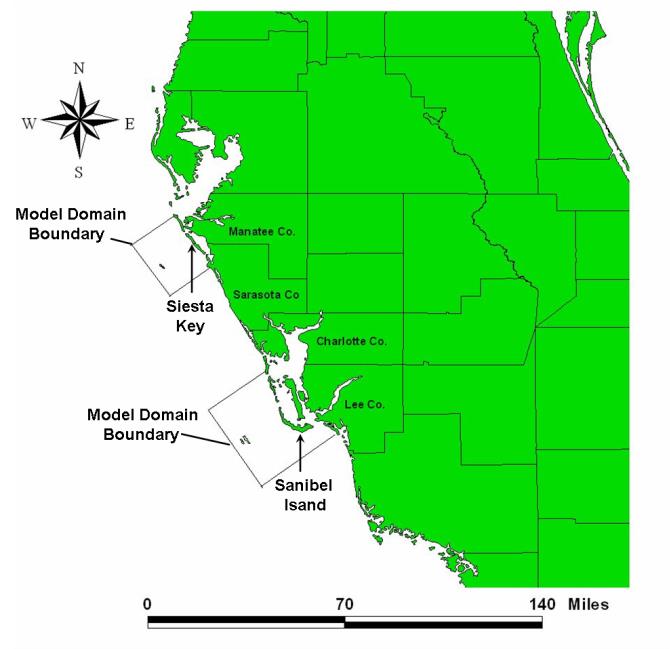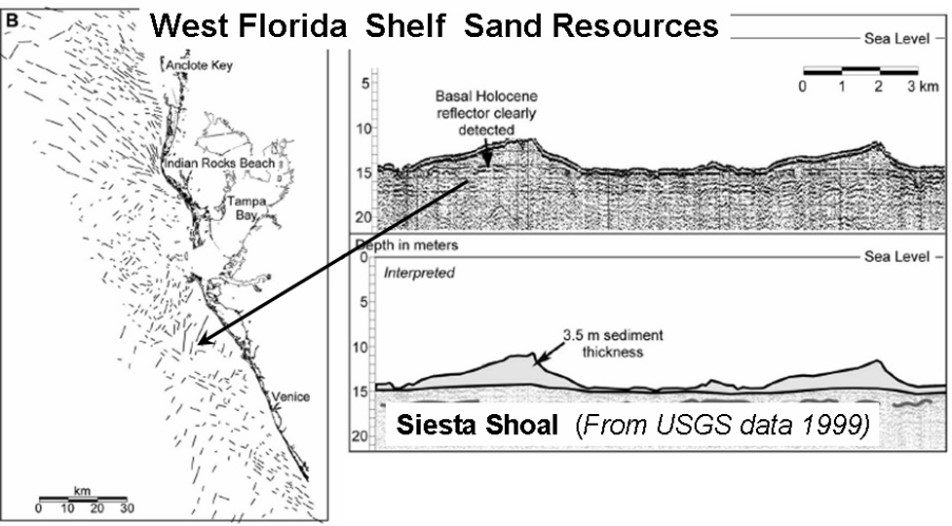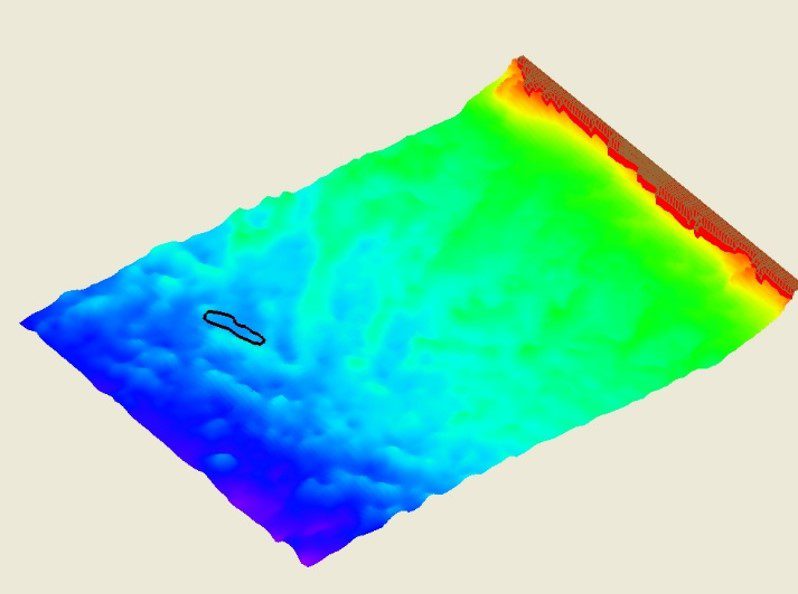Biological Characterization, Numerical Wave Model Analysis, and Physical Implications of Sand Dredging on the Topography of the West Florida Shelf Counties
The project, performed under Scientific Environmental Applications (now part of Applied Ecology, Inc.) is a characterization study of the physical and biological resources of sand shoals to determine the potential impacts of dredging to protected species, habitat and near shore beaches. The project study area included three study sites designated as T1, T2, and Siesta Shoals located offshore in Federal waters of West Florida as shown in Figure 1.1. Literature review, field sampling events and numerical modeling simulations were applied to evaluate resources and to recommend mitigation strategies. The numerical models simulated pre and post-dredge cut scenarios with excavations set at different levels to assess potential physical impacts at the borrow sites and nearshore beaches. Figure 1 shows the model boundary for each of the three shoals evaluated in this study. Physical conditions of normal weather and higher energy conditions associated with tropical end extra-tropical storms were also simulated. Based on model simulations, there is no significant difference between pre and post dredge cuts. The simulated sand transport results from large volume excavations (9 million cubic yards of sand) from the T1/T2 system varied from about 1 to 3 cm (0.03 to 0.1 ft.) at the shoreline, which is less than the natural variability of net transport.

Locations of the Siesta Shoal, T1, and T2 sand ridge sites for biological and physical characterization. Depth contour interval is 5 m (16.5 ft).
Location of Shoals T1, T2, and Siesta Shoals in Federal waters offshore of west Florida. The approximate boundary of each model is also shown .
Tasks included the development and conduct of a biological field data collection/computer numerical modeling program to address the following issues:
- Characterization and evaluation of benthic habitats, biological communities (infauna, epifauna, demersal, and pelagic fishes), and sediment grain size in potential borrow areas.
Assess the potential effects of offshore sand dredging on benthic and pelagic communities, development of environmental windows that best protects benthic and pelagic species from adverse environmental effects. - Examine the potential for alteration in the local wave field following dredging from within potential sand borrow sites, the potential for increased wave action after dredging within potential sand borrow sites and any resultant adverse localized changes in erosional patterns and longshore coastal transport and the potential for change in local sediment transport rates as a result of altering the local bathymetry, due to storm events.
- Examine the cumulative physical effects of multiple dredging events and extraction of a large volume of material within the identified potential borrow sites.
- Use numerical wave modeling to examine the potential for adverse effects on the physical wave field from dredging along the west Florida shelf, accounting for the differences in topography between the west and the Atlantic offshore areas.
Existing data of offshore west coast sand source
Siesta Shoal toporaphic image.



